A guide for learning strategies to support Listening and Spoken Language (LSL) outcomes for children with hearing loss.
The following videos show Listen to Me!® alumni families using listening and spoken language strategies at home.
These clips demonstrate a few examples of how to implement each strategy, but the possibilities are endless! They are intended as a learning tool to inspire parents and professionals to bring listening and language into everyday activities.
You can download this guide in pdf format here. (English version).
And now available in Spanish! Download the Spanish version here.
Setting the Stage for Listening
-
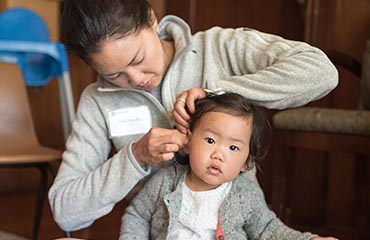
- Eyes Open, Ears On
- It's important for your child to wear their hearing devices all day long. If their eyes are open, their ears should be on.
- https://www.youtube.com/watch?v=gOeQsbzEa-E
-
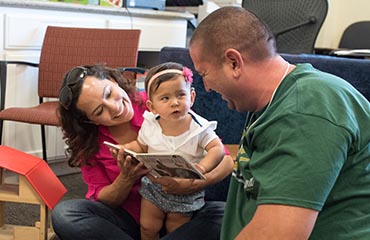
- Optimal Listening Position
- Sitting next to or slightly behind your child ensures that they are relying on their listening skills to understand what you say.
- https://www.youtube.com/watch?v=Qx5dK3OqGvs
-

- Build Auditory Attention
- It's helpful to get your child's listening attention before you tell them new information. Point to your ear and say, "Listen!" to help them attend to sounds and language.
- https://www.youtube.com/watch?v=6uDD7gFLVwc
-

- Bring Attention to Sound
- Your child will be hearing lots of new sounds throughout their day. Bring attention to sound by pointing to your ear and saying, "I heard that!"
- https://www.youtube.com/watch?v=phlUpbEZ1ds
-

- Auditory First
- With auditory first, talk about a sound or object before your child sees it. This helps grow your child's listening brain.
- https://www.youtube.com/watch?v=47Cw_jdgX_w
-

- Auditory Sandwich
- An auditory sandwich helps connect what your child hears to what they see. First, say the word by itself. Next, add a visual like a picture or a sign. Last, say the word again without any visual support.
- https://www.youtube.com/watch?v=XM3WGPk5KNQ
Repetition
-
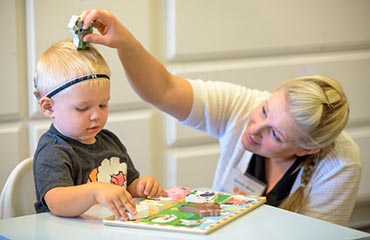
- Auditory Bombardment
- Auditory bombardment happens when you provide your child with many opportunities to hear a speech sound or a new word.
- https://www.youtube.com/watch?v=dnsemanSIqo
-

- Radio Commentary
- Talk about everything your child is doing, seeing and thinking as they engage in their daily routines.
- https://www.youtube.com/watch?v=RFAX7QZiaag
-
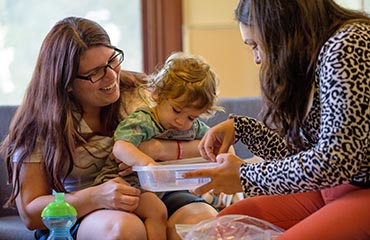
- Self Talk
- Self-talk means talking about what you are doing, feeling, and thinking during your daily routines.
- https://www.youtube.com/watch?v=4G6D9UzacZU
-
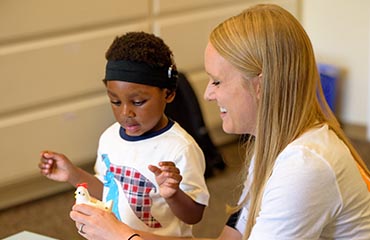
- Learning to Listen Sounds
- Learning to Listen sounds engage a child's listening skills during play. Adding sound effects to common objects and actions makes it easier for your child to connect sound with meaning.
- https://www.youtube.com/watch?v=z4B8QPiIIAg
-
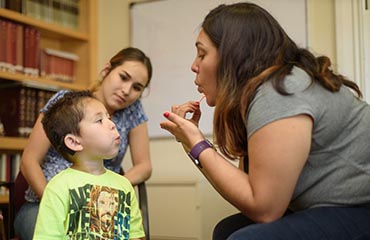
- Repetition
- Repetition helps children learn new words. Repeat words in your daily routines to grow your child's vocabulary every day!
- https://www.youtube.com/watch?v=qekZ26EdHfg
-

- Use Music
- Music is a wonderful tool for building your child's language and listening skills. Incorporate music and add some rhythm and rhyme to your child's daily routines!
- https://www.youtube.com/watch?v=kVU_QzPBQX0
Building Interest
-
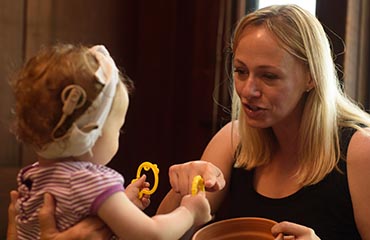
- Parentese
- Your voice is your child's favorite thing to listen to! Keep things interesting by changing your pitch and volume and using an excited voice!
- https://www.youtube.com/watch?v=w7Tek9jR-_8
-
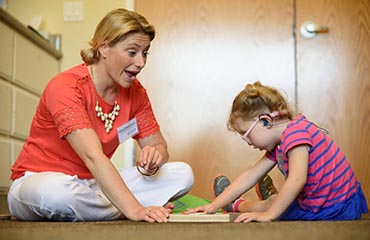
- Auditory Closure
- Pause at the end of a song or sentence to give your child a chance to fill in the blank!
- https://www.youtube.com/watch?v=kD-I169Lc6c
-
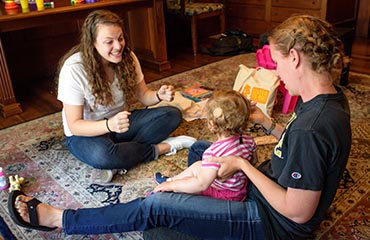
- Acoustic Highlighting
- Acoustic highlighting brings attention to the target word in a sentence. You can do this by making the word longer, louder, or pausing around the word for emphasis.
- https://www.youtube.com/watch?v=iC_ba_8yCNI
-

- Whisper
- Whispering is a way to emphasize the consonant sounds in a target word. This strategy can help your child focus on the quieter sounds in a word, like /t/ or /p/.
- https://www.youtube.com/watch?v=DtqDNK0wpiE
-

- Wait Time
- Pause and allow your child to process auditory information. Count to 10 after asking a question and observe how your child responds!
- https://www.youtube.com/watch?v=V7Zl3nn_5hQ
-

- Expectant Look
- Show your child that you expect a response by giving them an expectant look. You can raise your eyebrows, tilt your head, and even use your hands to show them you're ready for their turn.
- https://www.youtube.com/watch?v=ahiwVPtdc2A
Keeping Them Engaged
-
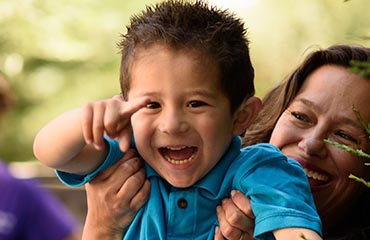
- Follow Your Child's Lead
- Children learn best when they're interested in the activity. Let your child lead the way, and add listening and language to whatever they choose.
- https://www.youtube.com/watch?v=GuI1ikK72OA
-
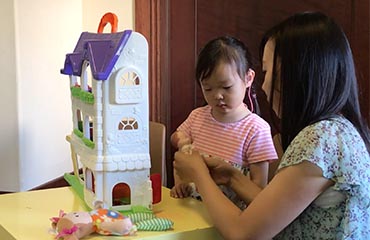
- Joint Attention
- Joint attention happens when you and your child are focusing on the same thing. Your child may look to you and look back at the object as if to tell you, "This is what I want you to notice!"
- https://www.youtube.com/watch?v=WsC2lcySA2M
-
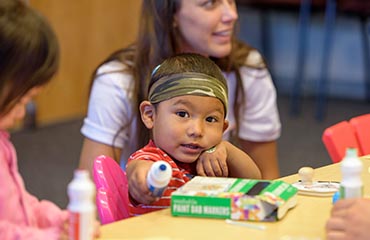
- Check for Comprehension
- It's important to check in and ensure your child understands what they're hearing. For younger children, observe their responses - did they look for or reach for the item you mentioned?
- https://www.youtube.com/watch?v=e0ARZ2fynCs
-

- Sabotage and Silliness
- Unexpected situations lead to new language opportunities! Set your child up to communicate with you by making mistakes and getting silly.
- https://www.youtube.com/watch?v=2JAqInsBkFI
-
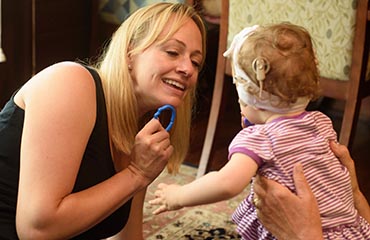
- Take Turns
- You are your child's first conversation partner! Show them their voice is meaningful by taking turns with them.
- https://www.youtube.com/watch?v=0Ejb5Yd6EYM
Raising the Bar
-
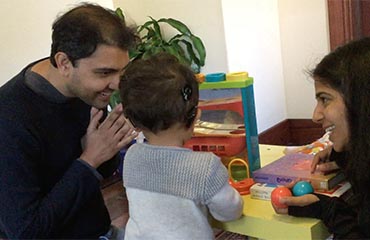
- Expand
- Children learn best when they hear language that is a little more complex than theirs. Expand on what your child says by adding a detail or making their sentence longer.
- https://www.youtube.com/watch?v=pIcRAWVA5nc
-
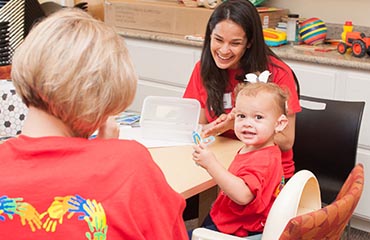
- Model Correct Grammar
- When children start putting words together, their sentences aren't always perfect. Repeat your child's sentence back to them with correct grammar so they can hear their sentence correctly.
- https://www.youtube.com/watch?v=641o9mnvXqA
-
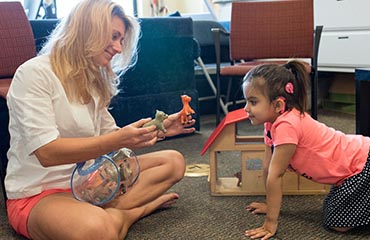
- Auditory Clues
- Grow your child's listening skills by describing items with auditory clues! Talk about the item's color, shape, and function, and see if they can guess what it is!
- https://www.youtube.com/watch?v=tEI0sUeaM4U
-
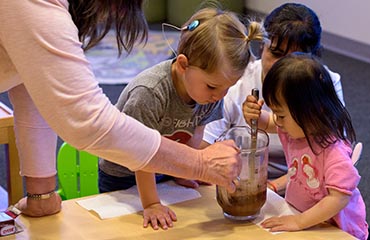
- Open Ended Questions
- We get the most language from children when we ask open-ended questions. Try asking questions that require more than one word responses, like "What do you see?" or "What will happen next?"
- https://www.youtube.com/watch?v=q77m1Y0nwbk
-
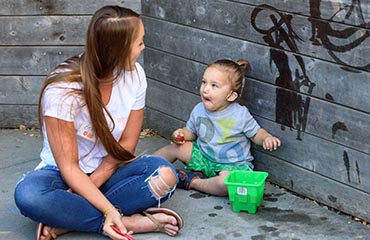
- Communication Repair
- Misunderstandings are bound to happen! Ask your child, "What did you hear?" to help them take charge of their listening. You can also model communication repair at home with phrases like, "Tell me again."
- https://www.youtube.com/watch?v=7B3eAMgeyUo